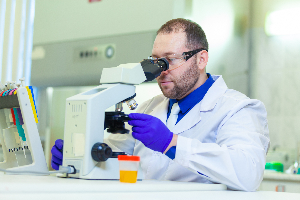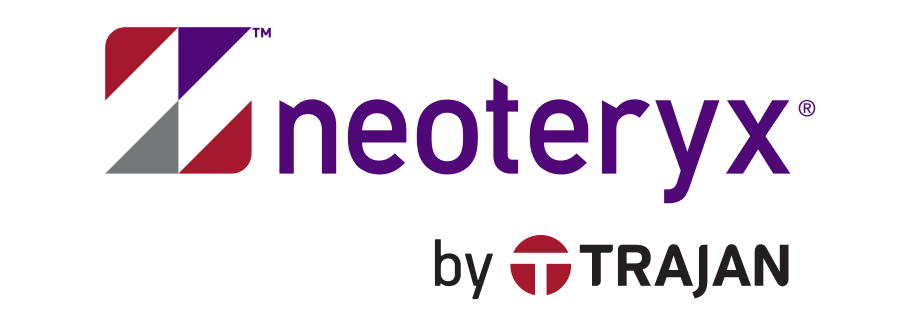Share this
dried urine microsampling for toxicology urinalysis
by Neoteryx Microsampling on Jul 5, 2021 9:00:00 AM
 Urinalysis has long been a staple sampling approach in toxicology research and drug screening, but conventional urine sample collection leaves much to be desired.
Urinalysis has long been a staple sampling approach in toxicology research and drug screening, but conventional urine sample collection leaves much to be desired.
The ‘pee-in-a-cup’ method is not only a messy and unpleasant process for the person being tested, but also poses a risk of both sample contamination (with epithelial cells, skin flora, and bacteria) and adulteration.
These drawbacks have driven some researchers and practitioners to consider replacing or supplementing traditional fluid urine sampling with dried urine sampling.
Dried Urine Sampling Methods
In addition to the traditional fluid sampling method, urine can also be analyzed as a ‘dried matrix’ using two different microsampling methods:
- Dried urine spot (DUS) using a filter card
- Volumetric microsampling using a Mitra® device
DUS Cards
DUS card sampling is a simple and user-friendly way to collect dried urine samples. The first step usually involves the subject collecting liquid urine in a specimen cup or tube. The next step typically involves a researcher or lab technician using a tool to apply drops of liquid urine onto designated spots on a filter card.
In some cases, research study subjects may self-collect urine samples and also apply the drops to the DUS card. Once the urine spots have dried, the DUS card is sent to the laboratory to be processed and tested for the presence of drugs, hormones, metal toxicity, disease biomarkers, or other elements.
The DUS card method is considered relatively easy to use for professionals, but it can be somewhat confusing and imprecise for study subjects. Some study subjects, for example, may be unsure how much urine is needed on each spot to deliver a good sample.
They may also be confused about where on the card this sample should be placed, even when detailed instructions are provided.
Volumetric Absorptive Microsampling With Portable Devices
Urine sample collection using Mitra® devices with VAMS® tips is similar to the DUS process. As with the DUS method, study participants first self-collect their liquid urine in a specimen cup.
Next, they hold the absorbent VAMS tip of the Mitra device on the surface of the wet urine sample until the device tip is completely saturated. They typically fill two device tips to generate two urine samples for analysis. After the sampled tips have dried on the devices, participants can close their sampled devices in the protective cartridge. They place their closed device cartridge into a provided pouch, and seal it. The sealed pouch goes into a mailing envelope and is sent to the research lab for testing.
This volumetric microsampling method is simpler than using DUS cards. The Mitra device tips are designed to collect a precise specimen volume, which eliminates the confusion people experience with DUS cards. The VAMS® technology employed on the tips of these devices ensures that people provide the correct amount of urine for each sample. When compared to DUS card sampling, this built-in precision often results in a higher proportion of useful, high-quality samples.
Investigating the Viability of Dried Urine Sampling
Dried urine sampling may be a convenient way to collect and transport urine samples, but can it produce the same results as traditional liquid sampling? A study conducted by Dr. Michele Protti and colleagues at Italy’s University of Bologna suggests the answer is, yes.
Dr. Protti and colleagues tested 30 μl of dried human urine in a study of six different corticosteroids. These tests were repeated twice: once with samples collected using DUS cards, and once with samples collected using Mitra devices with VAMS technology.
Both sets of tests found the samples had good linearity and stability at room temperature, as well as satisfactory precision, extraction yields, and matrix effect. The study also found very good agreement between the data generated from dried samples and liquid samples. Another study commissioned by the Italian Ministry of Health found similar results when testing for anabolic-androgenic steroids.
These studies indicate that both dried urine sampling methods yield accurate, reliable results and can substitute for liquid urine testing in many relevant scenarios.
Why Choose Dried Urine Sampling?
Despite the viability of dried urine sampling methods, adoption of this approach has been relatively slow. This may be due to lab technicians' lack of training or experience with dried matrices; most are accustomed to conducting research and tests using liquid urine samples. However, labs can benefit from expanding their capabilities to include dried urine microsampling.
There are many reasons to consider using dried urine sampling methods, including:
- Allows remote sample collection to take place with minimal patient training or instruction
- Easy to store and transport samples without specialized processes/equipment (refrigeration is not required)
- Increases sample stability when testing for enzymatic/bacterial activities
- Lays the groundwork for easier laboratory automation later
- Less messy than traditional liquid urine testing
- More precise samples can be collected
- Dried samples are less vulnerable to contamination, dilution, or alteration
- Saves time and money
Improved Sample Collection for Urinalysis
Both methods of dried urine microsampling offer many advantages over traditional liquid sampling and are a viable alternative. Researchers can use either approach to deliver an improved study subject experience at a lower cost without compromising the integrity of their testing, and often with more accurate results.
Share this
- Microsampling (206)
- Research, Remote Research (119)
- Venipuncture Alternative (105)
- Clinical Trials, Clinical Research (83)
- Mitra® Device (73)
- Therapeutic Drug Monitoring, TDM (51)
- Dried Blood Spot, DBS (39)
- Biomonitoring, Health, Wellness (30)
- Infectious Disease, Vaccines, COVID-19 (24)
- Blood Microsampling, Serology (23)
- Omics, Multi-Omics (21)
- Decentralized Clinical Trial (DCT) (20)
- Specimen Collection (18)
- Toxicology, Doping, Drug/Alcohol Monitoring, PEth (17)
- Skin Microsampling, Microbiopsy (14)
- hemaPEN® Device (13)
- Preclinical Research, Animal Studies (12)
- Pharmaceuticals, Drug Development (9)
- Harpera Device (7)
- Industry News, Microsampling News (5)
- Antibodies, MAbs (3)
- Company Press Release, Product Press Release (3)
- Environmental Toxins, Exposures (1)
- July 2025 (1)
- May 2025 (1)
- April 2025 (2)
- December 2024 (2)
- November 2024 (1)
- October 2024 (3)
- September 2024 (1)
- June 2024 (1)
- May 2024 (1)
- April 2024 (4)
- March 2024 (1)
- February 2024 (2)
- January 2024 (4)
- December 2023 (3)
- November 2023 (3)
- October 2023 (3)
- September 2023 (3)
- July 2023 (3)
- June 2023 (2)
- April 2023 (2)
- March 2023 (2)
- February 2023 (2)
- January 2023 (3)
- December 2022 (2)
- November 2022 (3)
- October 2022 (4)
- September 2022 (3)
- August 2022 (5)
- July 2022 (2)
- June 2022 (2)
- May 2022 (4)
- April 2022 (3)
- March 2022 (3)
- February 2022 (4)
- January 2022 (5)
- December 2021 (3)
- November 2021 (5)
- October 2021 (3)
- September 2021 (3)
- August 2021 (4)
- July 2021 (4)
- June 2021 (4)
- May 2021 (4)
- April 2021 (3)
- March 2021 (5)
- February 2021 (4)
- January 2021 (4)
- December 2020 (3)
- November 2020 (5)
- October 2020 (4)
- September 2020 (3)
- August 2020 (3)
- July 2020 (6)
- June 2020 (4)
- May 2020 (4)
- April 2020 (3)
- March 2020 (6)
- February 2020 (3)
- January 2020 (4)
- December 2019 (5)
- November 2019 (4)
- October 2019 (2)
- September 2019 (4)
- August 2019 (4)
- July 2019 (3)
- June 2019 (7)
- May 2019 (6)
- April 2019 (5)
- March 2019 (6)
- February 2019 (5)
- January 2019 (8)
- December 2018 (3)
- November 2018 (4)
- October 2018 (7)
- September 2018 (6)
- August 2018 (5)
- July 2018 (8)
- June 2018 (6)
- May 2018 (5)
- April 2018 (6)
- March 2018 (4)
- February 2018 (6)
- January 2018 (4)
- December 2017 (2)
- November 2017 (3)
- October 2017 (2)
- September 2017 (4)
- August 2017 (2)
- July 2017 (4)
- June 2017 (5)
- May 2017 (6)
- April 2017 (6)
- March 2017 (5)
- February 2017 (4)
- January 2017 (1)
- July 2016 (3)
- May 2016 (1)
- April 2016 (2)



Comments (1)